Instruction
Stickney: A dangerous trend is developing for top players
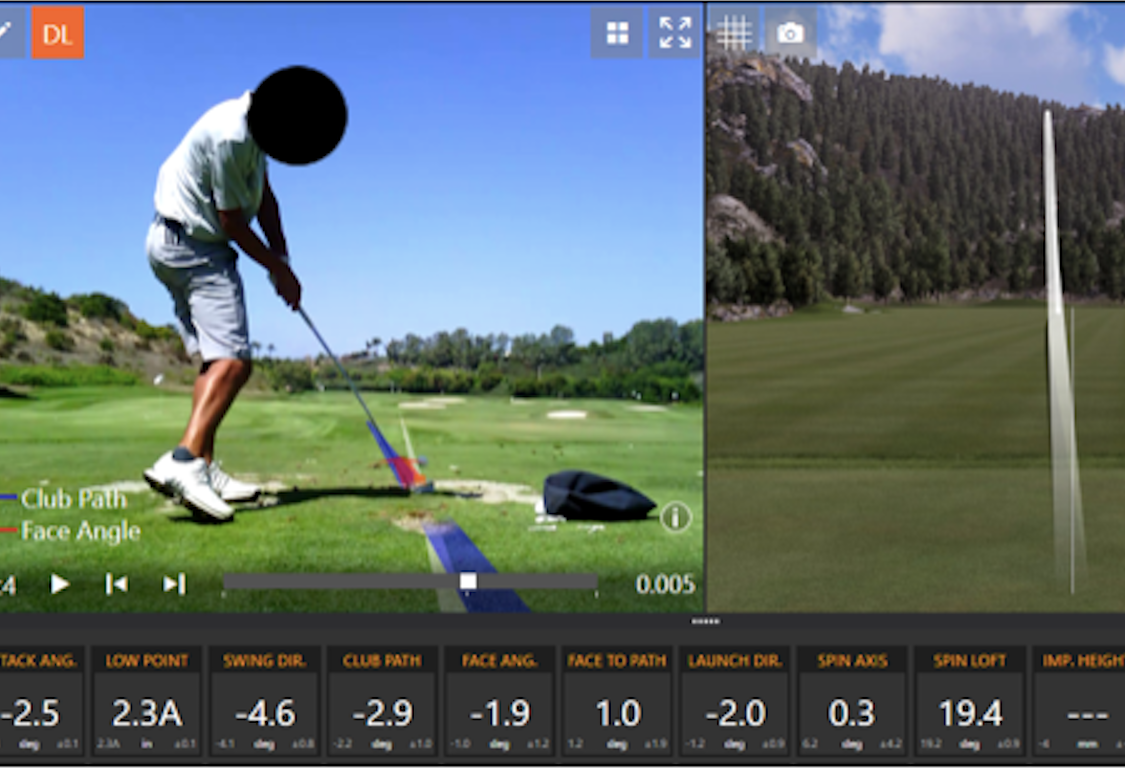
As a teacher, I obviously have my own particular biases as it pertains to the different stroke patterns I teach to the random levels of golfers I see, however, one thing remains the same they ALL want a predictable ball flight in the end.
To me, it doesn’t matter if you swing it upright like Wolff or flatter like Kucher because they both work, as do all the swings in the middle IF they produce a consistent result under pressure. What we now understand with the advent of GEARS and Trackman is that everyone has their own individual motion and sure there are certain fundamentals that everyone great possesses but end the end we are all left to “find what works best” for us. And over time, the great players have gravitated towards the best and most desirable way that they swing the club without worrying what it looks like only what it produces.
However, I have been noticing a trend amongst the highest level of players that is disturbing…and this trend that we’ll be discussing in a second is beginning to filter down to the kids whom have ready access to launch monitors in high school and just entering into. This trend is the culprit of a two-way miss, albeit a very small one, but a two-way miss nonetheless all in efforts to try and hit the ball too straight.
First, let’s show you examples of some of the best players I have seen personally at the top amateur levels. Every one of these players shown below are proven winners and are ranked very highly nationally on the amateur and Division I college circuits.
I asked each player above what their normal ball flight was day-to-day and each replied, “mostly straight, but if I miss it then it tends to go X, but very, very slightly.” (For those Trackman users, these swings are “normalized,” which takes out the wind etc. for a touch more reality regardless of the conditions outside at the time.)
Now look in the left frame of each player’s swing, and you will see a blue line, and if you look closer, you will see that it is laying directly on top of a white line. The white line is the player’s target line—where they were trying to hit the ball. And the blue line is the PATH of the club for the particular swing shown.
What you will see is that the path of the club is basically “zeroed” out where the path and the target line are moving directly in the same direction. While this might seem like a great idea, in fact no one can play from this position because it’s impossible to zero out the path and clubface at the same time. No teacher in history has seen this consistently. We have seen very small face to path relationships but never 0 for the path, 0 for the face, 0 for the face to path, and 0 for the spin axis. We’re talking trying to manage a degree which is basically 1/6 to of a click of your second hand on your watch dial!
If you could play from a zero path and zero face, then this is what it would look like on Trackman. I have only seen 0 path and a 0 face just once in ALL the shots I have seen with Trackman, and the shot I am talking about curved way offline due to the fact that it was a longer club coupled with a faulty impact position (gear effect).
Now here is the key for people who desire a ball flight that curves as little as possible and zeroing out the path is not the answer! The key is to play with a face to path ratio that is very, very low which helps to lower the ball’s spin axis and thus the ball would curve slightly. If you have the path sitting a couple of degrees left or right of the path then you will be able to have some predictability of your curvature which will give you freedom when you don’t have our “A” swing working that day.
NOTE: Think about pro bowlers, how many do you see that roll the ball directly at the head pin?! Zero. They curve the ball to some degree for more predictability.
As we know, in order to hit the ball where we want, we need to have some consistent curvature and when the path is on top of the target-line a slight twist of the face right or left causes baby pulls or baby pushes.
The goal of ballstriking efficiency is to eliminate ONE side of the course.
Secondly, we know that the ball begins mostly in the direction of the face at impact and will curve away from the path with a centered hit. Therefore, regardless of the curvature left to right or right to left you must work in this order- PATH then the FACE then the Target (as shown below) if not then you will hit pushes and pulls, slices and hooks!
Let’s examine this player above, who moves the ball left to right. We see a path that is leftward at basically -3.0 degrees and the face is almost -2.0 degrees left of the target but only 1.0 degree RIGHT of the path thus the ball curved gently left to right. For players desiring a mostly “straight” ball without the danger of missing it both ways, then the path has to be just far enough left or right of the target line so that the face can fit between the path and the target so you can begin the ball in the correct direction before it begins to curve. This reduction in the face-to-path relationship is the forgotten fundamental of the straight ball hitters!
As you can see, this player has a path that is slightly leftward and the face is only 1 degree rightward of this causing a very low face-to-path, and from this point, he has a spin axis of 0.3 meaning the ball barely moved rightward. This is the key to hitting the ball straighter…not zeroing out the path but reducing the FACE-to-PATH relationship! This cannot be mastered with a zeroed-out path because the face won’t consistently have room to fit between your path and target line as discussed. Thus you will hit micro-pulls or micro-pushes giving you the dreaded two-way miss…all because you have the path working too much down the line!
Path, face, and target…in that order will help you reduce your face to path difference and this will help you to lower your ball’s spin axis and straighter but MORE PREDICTABLE ball flights will ensue. Anything else spells disaster for the people who desire a “straight” ball flight!
- LIKE163
- LEGIT27
- WOW10
- LOL10
- IDHT4
- FLOP22
- OB16
- SHANK181
Instruction
The Wedge Guy: The easiest-to-learn golf basic

My golf learning began with this simple fact – if you don’t have a fundamentally sound hold on the golf club, it is practically impossible for your body to execute a fundamentally sound golf swing. I’m still a big believer that the golf swing is much easier to execute if you begin with the proper hold on the club.
As you might imagine, I come into contact with hundreds of golfers of all skill levels. And it is very rare to see a good player with a bad hold on the golf club. There are some exceptions, for sure, but they are very few and very far between, and they typically have beat so many balls with their poor grip that they’ve found a way to work around it.
The reality of biophysics is that the body moves only in certain ways – and the particulars of the way you hold the golf club can totally prevent a sound swing motion that allows the club to release properly through the impact zone. The wonderful thing is that anyone can learn how to put a fundamentally sound hold on the golf club, and you can practice it anywhere your hands are not otherwise engaged, like watching TV or just sitting and relaxing.
Whether you prefer an overlap, interlock or full-finger (not baseball!) grip on the club, the same fundamentals apply. Here are the major grip faults I see most often, in the order of the frequency:
Mis-aligned hands
By this I mean that the palms of the two hands are not parallel to each other. Too many golfers have a weak left hand and strong right, or vice versa. The easiest way to learn how to hold the club with your palms aligned properly is to grip a plain wooden ruler or yardstick. It forces the hands to align properly and shows you how that feels. If you grip and re-grip a yardstick several times, then grip a club, you’ll see that the learning curve is almost immediate.
The position of the grip in the upper/left hand
I also observe many golfers who have the butt of the grip too far into the heel pad of the upper hand (the left hand for right-handed players). It’s amazing how much easier it is to release the club through the ball if even 1/4-1/2″ of the butt is beyond the left heel pad. Try this yourself to see what I mean. Swing the club freely with just your left hand and notice the difference in its release from when you hold it at the end of the grip, versus gripping down even a half inch.
To help you really understand how this works, go to the range and hit shots with your five-iron gripped down a full inch to make the club the same length as your seven-iron. You will probably see an amazing shot shape difference, and likely not see as much distance loss as you would expect.
Too much lower (right) hand on the club
It seems like almost all golfers of 8-10 handicap or higher have the club too far into the palm of the lower hand, because that feels “good” if you are trying to control the path of the clubhead to the ball. But the golf swing is not an effort to hit at the ball – it is a swing of the club. The proper hold on the club has the grip underneath the pad at the base of the fingers. This will likely feel “weak” to you — like you cannot control the club like that. EXACTLY. You should not be trying to control the club with your lower/master hand.
Gripping too tightly
Nearly all golfers hold the club too tightly, which tenses up the forearms and prevents a proper release of the club through impact. In order for the club to move back and through properly, you must feel that the club is controlled by the last three fingers of the upper hand, and the middle two fingers of the lower hand. If you engage your thumbs and forefingers in “holding” the club, the result will almost always be a grip that is too tight. Try this for yourself. Hold the club in your upper hand only, and squeeze firmly with just the last three fingers, with the forefinger and thumb off the club entirely. You have good control, but your forearms are not tense. Then begin to squeeze down with your thumb and forefinger and observe the tensing of the entire forearm. This is the way we are made, so the key to preventing tenseness in the arms is to hold the club very lightly with the “pinchers” — the thumbs and forefingers.
So, those are what I believe are the four fundamentals of a good grip. Anyone can learn them in their home or office very quickly. There is no easier way to improve your ball striking consistency and add distance than giving more attention to the way you hold the golf club.
More from the Wedge Guy
- The Wedge Guy: Golf mastery begins with your wedge game
- The Wedge Guy: Why golf is 20 times harder than brain surgery
- The Wedge Guy: Musings on the golf ball rollback
- LIKE83
- LEGIT13
- WOW5
- LOL1
- IDHT0
- FLOP4
- OB1
- SHANK8
Instruction
Clement: Stop ripping off your swing with this drill!

Not the dreaded headcover under the armpit drill! As if your body is defective and can’t function by itself! Have you seen how incredible the human machine is with all the incredible feats of agility all kinds of athletes are accomplishing? You think your body is so defective (the good Lord is laughing his head off at you) that it needs a headcover tucked under the armpit so you can swing like T-Rex?
- LIKE0
- LEGIT2
- WOW2
- LOL0
- IDHT0
- FLOP0
- OB0
- SHANK2
Instruction
How a towel can fix your golf swing

This is a classic drill that has been used for decades. However, the world of marketed training aids has grown so much during that time that this simple practice has been virtually forgotten. Because why teach people how to play golf using everyday items when you can create and sell a product that reinforces the same thing? Nevertheless, I am here to give you helpful advice without running to the nearest Edwin Watts or adding something to your Amazon cart.
For the “scoring clubs,” having a solid connection between the arms and body during the swing, especially through impact, is paramount to creating long-lasting consistency. And keeping that connection throughout the swing helps rotate the shoulders more to generate more power to help you hit it farther. So, how does this drill work, and what will your game benefit from it? Well, let’s get into it.
Setup
You can use this for basic chip shots up to complete swings. I use this with every club in my bag, up to a 9 or 8-iron. It’s natural to create incrementally more separation between the arms and body as you progress up the set. So doing this with a high iron or a wood is not recommended.
While you set up to hit a ball, simply tuck the towel underneath both armpits. The length of the towel will determine how tight it will be across your chest but don’t make it so loose that it gets in the way of your vision. After both sides are tucked, make some focused swings, keeping both arms firmly connected to the body during the backswing and follow through. (Note: It’s normal to lose connection on your lead arm during your finishing pose.) When you’re ready, put a ball in the way of those swings and get to work.

Get a Better Shoulder Turn
Many of us struggle to have proper shoulder rotation in our golf swing, especially during long layoffs. Making a swing that is all arms and no shoulders is a surefire way to have less control with wedges and less distance with full swings. Notice how I can get in a similar-looking position in both 60° wedge photos. However, one is weak and uncontrollable, while the other is strong and connected. One allows me to use my larger muscles to create my swing, and one doesn’t. The follow-through is another critical point where having a good connection, as well as solid shoulder rotation, is a must. This drill is great for those who tend to have a “chicken wing” form in their lead arm, which happens when it becomes separated from the body through impact.
In full swings, getting your shoulders to rotate in your golf swing is a great way to reinforce proper weight distribution. If your swing is all arms, it’s much harder to get your weight to naturally shift to the inside part of your trail foot in the backswing. Sure, you could make the mistake of “sliding” to get weight on your back foot, but that doesn’t fix the issue. You must turn into your trial leg to generate power. Additionally, look at the difference in separation between my hands and my head in the 8-iron examples. The green picture has more separation and has my hands lower. This will help me lessen my angle of attack and make it easier to hit the inside part of the golf ball, rather than the over-the-top move that the other picture produces.


Stay Better Connected in the Backswing
When you don’t keep everything in your upper body working as one, getting to a good spot at the top of your swing is very hard to do. It would take impeccable timing along with great hand-eye coordination to hit quality shots with any sort of regularity if the arms are working separately from the body.
Notice in the red pictures of both my 60-degree wedge and 8-iron how high my hands are and the fact you can clearly see my shoulder through the gap in my arms. That has happened because the right arm, just above my elbow, has become totally disconnected from my body. That separation causes me to lift my hands as well as lose some of the extension in my left arm. This has been corrected in the green pictures by using this drill to reinforce that connection. It will also make you focus on keeping the lead arm close to your body as well. Because the moment either one loses that relationship, the towel falls.


Conclusion
I have been diligent this year in finding a few drills that target some of the issues that plague my golf game; either by simply forgetting fundamental things or by coming to terms with the faults that have bitten me my whole career. I have found that having a few drills to fall back on to reinforce certain feelings helps me find my game a little easier, and the “towel drill” is most definitely one of them.
- LIKE12
- LEGIT2
- WOW2
- LOL0
- IDHT0
- FLOP2
- OB0
- SHANK8
-

 19th Hole2 weeks ago
19th Hole2 weeks agoJohn Daly stuns fans into silence with brutal opening tee shot on PGA Tour Champions
-

 19th Hole1 week ago
19th Hole1 week agoThings got heated at the Houston Open between Tony Finau and Alejandro Tosti. Here’s why
-

 19th Hole5 days ago
19th Hole5 days agoReport: Tiger Woods has ‘eliminated sex’ in preparation for the 2024 Masters
-

 19th Hole3 weeks ago
19th Hole3 weeks ago2-time major champ announces shock retirement from the sport at age of 33
-

 19th Hole3 weeks ago
19th Hole3 weeks agoEdoardo Molinari reveals the latest PGA Tour golfer to turn down ‘good offer’ from LIV Golf
-

 19th Hole2 weeks ago
19th Hole2 weeks agoCharlie Woods finds it tough going on American Junior Golf Association debut
-

 19th Hole7 days ago
19th Hole7 days agoAddiction, spinal fusion, and scam artists – Everything Anthony Kim revealed in candid interview with David Feherty
-

 19th Hole3 weeks ago
19th Hole3 weeks agoJon Rahm dealt fresh blow to hopes of qualifying for 2025 Ryder Cup

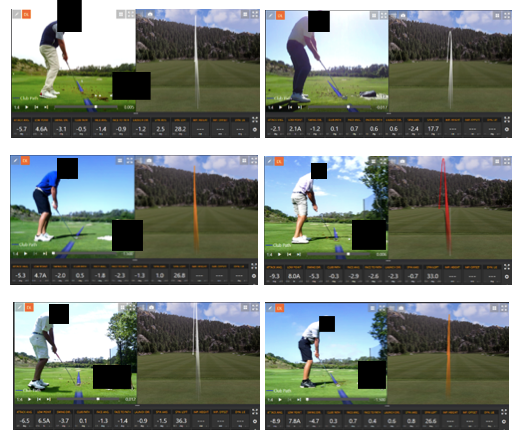
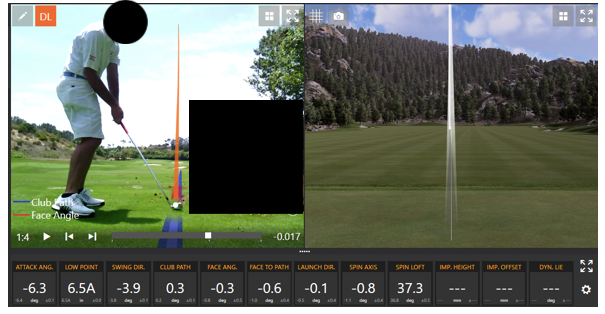
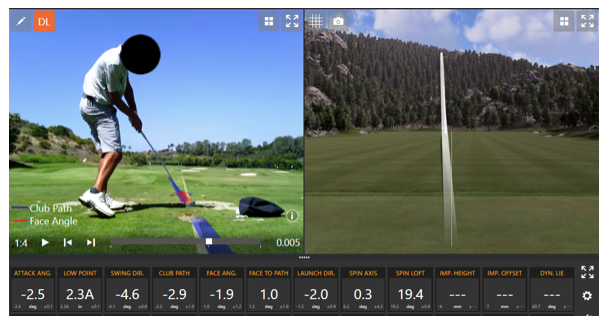




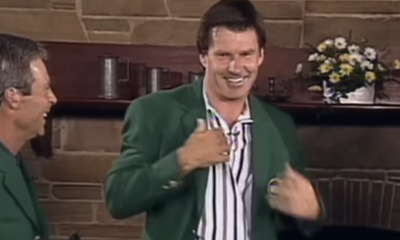



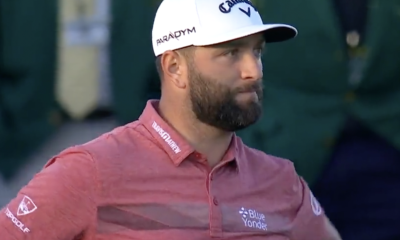

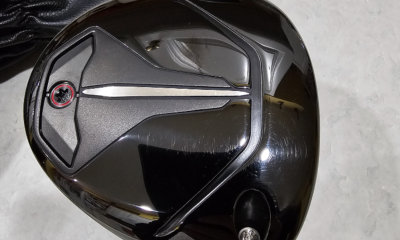













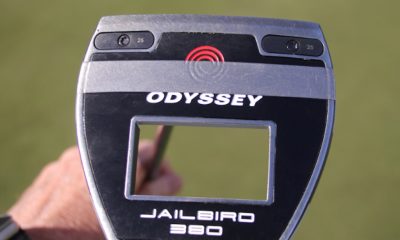

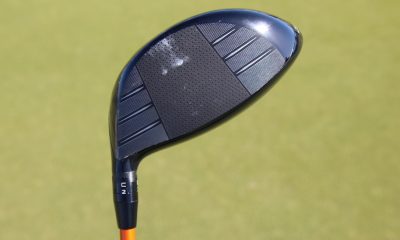



TIM
Oct 29, 2019 at 5:17 am
Great example of why golf instruction fails almost 100% of the time.
Waaaaay too much technical information for the average player (99.999% of the golfers alive).
Homer
Oct 29, 2019 at 5:21 am
Totally agree. The more technology we see in golf, the worse instruction has become. Can you imagine Harvey saying “let’s look at the data…”?
Do you know anyone who, a year after lessons, has improved?
Steve Wozeniak
Oct 11, 2019 at 12:02 pm
Man,
This guy got absolutely crushed!!!!! His next article will be on grip….
Steve Wozeniak PGA
kenny
Oct 8, 2019 at 1:15 am
I don’t understand this logic.
Let’s say my “stock, goal shot” is dead straight. And I have a 2 way miss either 10 yards right or 10 yards left.
How is this any different from someone who has a “stock, goal shot” of a 15 yard fade? Their miss would be a 5 yard fade or a 25 yard fade.
In both scenarios, the ball is ending up 10 yards left or right from the desired target. Just because one was only fades, how exactly is that any better?
Chris
Oct 3, 2019 at 4:43 pm
If you’re able to get so close to 0-0-0 that your 2-way misses are small that’s awesome (I hope to get there someday), then this may be a “garbage” article for you and that might be on the author for the way he set up the premise. But if you’ve fought an old slice down to just a fade over the years this had some good info. Find a natural/repeatable club head path to reduce your swing thoughts down to just getting the face angle in between that path and the target line.
Drop Stickney
Sep 29, 2019 at 6:07 pm
I don’t understand why GolfWRX still gives Stickney a platform. He’s been wrong on many occasions… search his history, and it’s littered with articles that are just what he thinks is right, but passing it off as gospel.
Mr Cranky
Sep 26, 2019 at 3:31 pm
What the heck did I just read? I have a headache.
joro
Sep 30, 2019 at 1:58 pm
Mr. Cranky,,,, You read about what we have known for years. Take your normal swing and whack it. All the majority of these teaching “GURUS” just confuse and ruin people. Don’t try to build a swing that does not work with your body and your strengths. We all have it and the bottom line is that some can and some can’t so enjoy yourself and swing naturally. Enjoy the game at whatever level.
GMR
Sep 25, 2019 at 9:44 am
I can honestly say that is unequivocally the worst golf instruction article I have ever read, in any medium. There is really not much else to say other than that this is “advice” is just generally utter hogwash of the highest order. I’m not going to go into debasing the “logic” behind this article, as it should be self-evident. However, I will say that my opinions of both Mr. Stickney II and of GolfWRX as a platform have diminished as a result of my having read this. This should never have been written, and it should never have been allowed to be published.
Agree Completely
Sep 25, 2019 at 7:25 pm
+1
TrackMan
Sep 22, 2019 at 7:25 pm
This is absolutely absurd. Straighter is longer, and longer means easier second shots. The stats don’t lie. The days of swinging fades over tree lines as a ‘stock shot’ are over.
Reibs
Sep 21, 2019 at 9:50 pm
If you think a 0-0-0 can’t be done you might want to check out Moe Norman and how he could hit it dead straight every time. He was a rare ball striking genious but he is an example that it can be done! For average humans a controlled draw or fade is a more lilkely possibility as Tom eliquently described.
geohogan
Sep 23, 2019 at 4:17 pm
https://www.youtube….IBmX7eR8#t=1733
Moe kept his trail hand under his lead hand through impact.
ie no release, simply let turn square clubface; creating an ellipse with a much longer flat spot for impact
Release the trail hand and golfers create an arc(circle) with a single flat spot for impact.
geohogan
Sep 23, 2019 at 4:26 pm
https://forums.golfwrx.com/discussion/1093545/anybody-here-just-swing-the-arms/p3
#70 Moe Normans swing from above
33:00-
KB
Sep 24, 2019 at 11:40 am
just because the ball appears to fly straight does not mean the path/path is zeroed out. everyone talks about how great a ball striker Moe was, fact is Jim Furyk would destroy Moe in ball striking clinic without even putting his shoes on. Jim was measured as the most consistent iron player on trackman. from a physics stand point, the most efficient way to strike an iron with the ball lying on the ground is a pull/fade, with the ball hitting slightly towards the heel of the club from the sweet spot, this will produce the most optimum ball flight and spin. conversely hitting driver off of a tee, slightly high and towards the toe.
myron miller
Sep 21, 2019 at 4:04 pm
Tom, I’d suggest you stick to teaching Golf and not bowling. As the other bowlers pointed out, almost every top bowler can thru the ball super straight and hit a given mark. Think of shooting spares, especially such as leaving a 10 pin or the 3-10 for a right handed bowler. He wants the straightest ball possible for this type of shot. And movement can cause the ball to miss the pins on that side. But a bowling ball with a ton of side spin that travels at a respectable speed will knock down more pins than a straight ball which almost always has zero or very little side spin. That side spin causes the pins to lay down and jump around and the more bouncing around the more chances they will bounce into other pins. It yields more action which helps on knocking down pins. Old saying: “Hit them thin and watch them spin”. Speed of the ball hitting the pins is critical. Too hard and the pins jump straight back or up and don’t have chance to jump right or left and unless exact correct angle was used, pins can jump out of the way and it’s easy to leave a 8 or 9 pin or 10 pin. Too slow and the ball side spin will take over and it becomes hard to hit the 1/3 pocket (1/2 for lefties). The amount of curve is directly proportional to the amount of spin and the speed of the bowling ball. More spin needs more speed or more curve happens and potentially too much curve which isn’t controllable. So all bowlers try to throw at a speed with the amount of curve(speed) that they can control for the amount of side spin they use. Lots of other factors such as slickness of lanes, etc had to be factored in as well. super slick needed more spin/slow needed less and made it super hard to control the amount of curve But the amount of side spin allowed an increase in ease of knocking down pins so all top bowlers tried to have as much as they could control. So as mentioned by earlier commentors all top bowlers find it easy to throw straight ball and can strike with on but that doesn’t increase their strike percentage and spin does. Back in the old days, the bowlers didn’t have trackman, but super slow motion cameras were used a lot and frame by frame shots were analyzed and spin analyzed extensively
Quite different from what you stated about bowling.
Bob Jones
Sep 21, 2019 at 2:01 pm
I’ve worked to make my shots go straight, and if one doesn’t, I find it and play my next shot. As for hitting into greens, my rule is to aim no closer to the pin than halfway to it from the center from about 150 in. From farther than that, 160+, my target is the green itself. I’m not good enough to play with a degree or two in my swing parameters.
Edward L LeBeau
Sep 21, 2019 at 1:21 pm
Too often the perfection of achieving a “0-0-0” is used for justification to intentionally curve the ball. However, achieving a “3-3-3” is no less difficult. A straight drive goes further and has both sides of the fairway to use for slight micro pulls or pushes. Tom, you might want to re-think this one.
Tom
Sep 21, 2019 at 1:18 pm
As others have said, I can’t see why it is any easier to get your path and face precisely off-line than it is to get them precisely on zero. Here’s a link with some Trackman numbers that addresses this same “straight shot” issue: https://blog.trackmangolf.com/zeroing-hurting-scorecard/. It shows that shot dispersion is about the same if your face angle is off by say 2 degrees whether your path is zero or not.
Bob Pegram
Sep 21, 2019 at 1:16 pm
Something that seems to be overlooked in a lot of the comments is that, when trying to zero out path, etc., it doesn’t take much change in spin rates to affect the outcome by quite a bit. On the other hand, when purposely hitting a fade or a draw consistently, it takes a lot bigger change in the spin rate to change the curvature of the ball. There is more room for error without getting into trouble. There is a bigger range of spin rates that stay in play than with a swing where the player is trying to zero out everything.
Bob Pegram
Sep 21, 2019 at 12:58 pm
When playing under high pressure knowing which way the ball will go is a big help and reduces the pressure. If a very small mistake could make the ball go either way that increases uncertainty which makes things worse. For example, I hit a fade. I can aim down the left side of the fairway knowing I have the entire width of the fairway as a safe space. Same thing at the green – I can aim at the left edge of the green without worrying the ball will go left. Obviously, depending on the pin position compared to traps and other hazards, I may shoot at the pin, but I still know the ball won’t go left.
joro
Sep 21, 2019 at 12:46 pm
Every player has a swing that usually fits his body. I do hot believe you can change that unless they are new and just don[t know. As a good teacher we must find that ?normal” swing and enhance it, not just to change it but to make it better and more comfortable. How many have been successful on Tour and after winning go to some “GURU” who changes what the brought and it doesn’t take long and they are gone. Enhance what you have, that is what a good teacher does.
Calvin
Sep 21, 2019 at 9:26 am
Correct me if I’m wrong, but pro bowlers don’t curve the ball because of predictability. They do so because the angle at which it hits the head and side pin increases chance of contact. I don’t think it has anything with them being worried about not being able to throw it straight…
Skip
Sep 21, 2019 at 12:42 pm
I was gonna comment (I bowl competitively). Correct, we don’t curve it for predictability. There’s actually the old adage “straighter is greater”. Curving the ball the right amount has a better ability to knock pins down, if throwing it straight was the best way to do it, we would.
Shouldn’t use analogies when you don’t understand.
Skip
Sep 21, 2019 at 12:46 pm
I was gonna comment (I bowl competitively). We don’t curve the ball for accuracy, we do it because it has a better ability to knock down pins. There’s an old adage “straighter is greater” but if throwing it dead straight worked, we would.
Don’t use analogies that you don’t understand.
JP
Sep 21, 2019 at 9:14 am
Isn’t a small miss trying to go 0-0-0-0-0 about the same as an intentional slight draw or fade intentionally hit? Both are slightly off from dead straight, only the intentional slight draw or fade is a little more predictable?
.
However, if the intentional fade/draw is missed a bit, it to can be as unpredictable as a dead straight miss. So do whatever works for you and is the most repeatable.
JB
Sep 21, 2019 at 8:10 am
This makes no sense. A micro 2 way miss is desirable. The reason golf pros talk about eliminating one side of the golf course is because they have a big miss (like a hook). You make the point that the key to a good swing is to have a small difference between the face and path. Here is some math: zero minus zero is zero = straight shot. Think of it this way if you play a golf shot with a predictable shape then there will be some curve…let’s say 10 yards for example…on a bad shot let’s say you you hit it the ball 10 yards left/right of your intended landing spot. If your a player who has “eliminated” one side of the course that miss will usually be right/left of the target in a predictable location. Example when drawing the ball a desirable miss will be out to the right (eleiminating a left miss). However if you have a micro zero/zero path type swing your 10 yard miss would be 5 yards on with side….which is better a 5 yard or 10 yard miss? Now here is the other thing to consider how does wind factor into a a curving versus non curving shot? The best players are trying to have a zeroed our shot because they want to remain the best.
geohogan
Oct 3, 2019 at 9:23 am
The reason golf pros talk about eliminating one side of the golf course is because they have a big miss (like a hook).
This is true. How often do we see golfers, including pros under pressure Pull and Pull /Hook.
When swing path is such that we sweep the inside quadrant of the ball, not the back of the ball,
the Pull and Pull /hood are eliminated.
Johnny Penso
Sep 20, 2019 at 11:06 pm
If I mishit a ball enough to move it 20 feet right or 20 feet left on approach and aim straight at the flag, doesn’t that put me within 20 feet of the flag each time?
KK
Sep 25, 2019 at 8:11 am
Maybe if flags were positioned with 20′ of green on either side all the time? Even then the slope of the green probably changes that spread significantly if you are playing different courses on a regular basis.
Ryan K
Sep 20, 2019 at 10:18 pm
Thank you Tom, makes perfect sense. Clearly above the intellectual ability of the other commenters who were unable to conceptualize the whole point of the article.
gdb99
Sep 21, 2019 at 9:15 am
Exactly!
Douglas
Sep 20, 2019 at 9:33 pm
“The goal of ballstriking efficiency is to eliminate ONE side of the course.”
You need more Scott Fawcett in your research. Even people who “always” hit a fade have a center of their shot pattern. Half the time they’re left of it, half the time they’re right, and it just matters where they aim. If you had data that showed that players playing a draw or fade had a tighter left/right distribution with any club your hypothesis would have some weight, but it doesn’t really pass the smell test. Overcooking a fade or double-crossing would seem to be more problematic than being a degree off from zero.
Eliminating one side of the course is a myth.
Brandon
Sep 21, 2019 at 1:29 pm
You’re correct with the shot pattern comment, but Scott also dislikes hitting it dead straight. He advocates the same thing Tom is talking about in the article, having a predictable curvature and eliminating 2 way miss.
234
Sep 20, 2019 at 8:16 pm
+/-1′ Left, center, right is all just +/-1′ of the average flight.
Tom F. Stickney II
Sep 20, 2019 at 6:03 pm
Mark—
Each player described a two way miss…if you want more ball-flight predictability then you need to eliminate one side of the course. Not everyone has these players’ level of talent thus the masses need more of a “cushion”
Rickey Di Dio
Sep 21, 2019 at 11:29 pm
Everyone on the PGA Tour has a two way miss. With the exception of 2-3 players, not exaggerating (Martin Laird, Robert Streb, and Billy Hurley), even the most “1 sided” players still miss to the opposite side 40% of the time. I’ll repeat… everyone has a two way miss. Shotlink data backs this up.
This is the best and most consistent players in the world. Why would a 15 handicap who plays 2 times a month fair any better?
Bye, Stickney
Sep 29, 2019 at 6:09 pm
Pffft. Data. This is Tom F. Stickney the second we’re talking to here. He doesn’t need your datas.
Ripper859
Sep 20, 2019 at 5:39 pm
What a retard. Garbage article. It’s been proven the best/straightest drivers move the ball the least. Every article on here continues to get worse.
bw
Sep 20, 2019 at 5:16 pm
If you’re trying to go 0-0-0 and miss slightly (either way) then wouldn’t it be a straight ball just slightly moving either left or right? What’s wrong with that?
mark
Sep 20, 2019 at 3:14 pm
So you are telling me to do the OPPOSITE of what these top 6 am players do? … Ya makes a lot of sense …